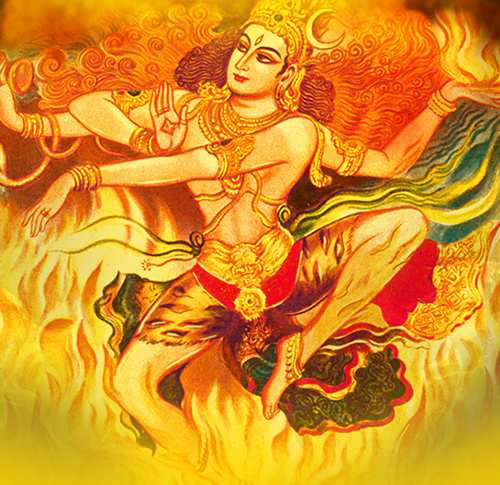During the 1st century of the Common Era, there was a great scholar born in Ayodhya, who had mastered various Sanskrit texts, different philosophies and held a tremendous power of debate. And he had severe dislike for Buddhists. He would go around to all Buddhist monasteries in North India and ask for a debate with the head of the place. His reputation and proficiency in debate was so legendary and so feared that most Buddhist monasteries stopped striking the bell inside their temple, for fear that the sound will attract him and invite a verbal duel. As this uncomfortable situation went on, one day a very old itinerant monk named Pārśva came to a remote monastery to take rest, when he was puzzled as to why no bells were being rung for the ritual worship. On hearing about the situation, Pārśva struck the bell vigorously to invite the debater, and when the he arrived, challenged him to a debate, with the condition that if he proved himself superior, then the younger adversary must accept Buddha Dharma and become his disciple. Lore says the debate carried on for seven days when Pārśva, who had exceptional spiritual abilities, used a power named Iddhipāda (Sanskrit: ṛddhipāda) to make the opponent go silent and thus won the bout. Eventually that young scholar, who had till that point been a trenchant enemy of Baudhas became an ardent follower of Mahayana Buddhism. His Guru renamed him Aśvaghoṣa.
Aśvaghoṣa turned out be a prolific Buddhist philosopher, dramatist, poet and orator. In his times he was nothing short of legendary. He would engage in fantastic debates with Nyaya-Visesika school of philosophers. He continued writing texts on Buddha in Classical Sanskrit which were translated in Chinese and Tibetan and passed on to different areas. One of his most celebrated works is an epic on the life of Buddha, named Buddhacharitra which is technically a Mahākāvya or great poem – a courtly epic in art composed in the style appropriate to Kāvya, the beginnings of which we find in the Rāmāyana.
For many centuries no other text as was widely read and respected as this one among Buddhists. The monk I-tsing (Yijing) mentioned that in his time Buddhacarita was “…extensively read in all the five parts of India and in the countries of the South Sea (Sumātra, Jāva and the neighbouring islands). He clothed manifold notions and ideas in a few words which so delighted the heart of his reader that he never wearied of perusing the poem. Moreover it was regarded as a virtue to read it in as much as it contained the noble doctrine in a neat compact form.”
manifold notions and ideas in a few words which so delighted the heart of his reader that he never wearied of perusing the poem. Moreover it was regarded as a virtue to read it in as much as it contained the noble doctrine in a neat compact form.”
The manuscript of this text was destroyed during the Islamic invasion of North India. Only those parts which were translated and send to China and Tibet were later used to rediscover the genius of the epic. From the time of Aśvaghoṣa, it became a standard to depict various incidents from the life of Buddha, as mentioned in the Buddhacharitra, around the central figure of Buddha in most Buddhist sculptures.
Some believe that Aśvaghoṣa finally died in Purusapura, which is today known as Pesawar in Pakistan. In year 1892 French scholar Sylvain Levi published the first chapter of the Buddhacarita, and the text became known to the West and the non-Sanskrit audience for the first time. Since then it has seen translated into English and many other languages and Aśvaghoṣa’s reputation stands among the foremost of great Sanskrit poets from India.


